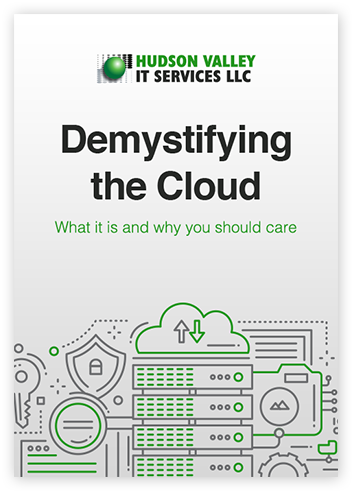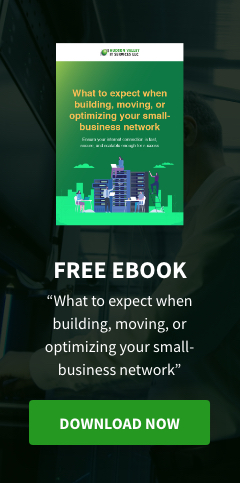Businesses are quickly moving to the cloud for benefits unmatched by on-premises data centers. These include better security, remote working, disaster recovery, ease of management, and cost efficiency, among others. But even if cloud technology is no longer the untried, untested, and risky product it once was, any business opting for migration needs to plan carefully to leverage cloud services for what they’re worth. Here are some essential considerations.
Strategic vision
First among these is planning, which goes beyond considerations of technology and processes but, more importantly, how you see your organization using the cloud. With your end goals in mind, define your idea of success and build a roadmap to get there, taking note of the potential pitfalls.
Capacity needs
Building a new cloud infrastructure for your business’s applications requires identifying your existing resources and knowing your capacity needs. Take stock of your company’s hardware, applications, web servers, and databases to find appropriate cloud services and to help ensure that your business moves easily to the cloud platform.
Migration plan
One of your main considerations when migrating data and applications to the cloud is working with the right provider. Choosing the perfect partner for your applications and services will require being familiar with potential providers. This will help you understand how to set up your cloud environment and migrate there.
With the help of a good provider, you can decide which applications to migrate to the new cloud environment and in what order. Decide whether to migrate in one big push or slowly over time. To evaluate the benefits of the cloud, choose applications that can be migrated easily or don’t have a lot of dependencies.
When planning, find out how on-premises applications will affect migrated ones, or whether you need to set up interoperability between cloud-based applications and on-premises applications. You may need to rework some applications to prevent conflict since they may not work on the cloud.
Carefully calculate the cost of provisioning your resources on the cloud, while understanding the pricing model for each service your organization will employ. Consider additional costs that you might miss, such as Data Transfer Out. Many companies still under-forecast various cloud migration costs, including user training and change management programs for employees.
Download our free eBook!
Interested in moving to the cloud? Read our free eBook, Demystifying the Cloud: What it is and why you should care for information on how it works and why you need it.
Testing plan
After selecting and migrating applications, your organization will have to validate the success of the migration through testing. This is a critical stage of any migration plan and includes processes like application capabilities testing, access, permissions, integrations, and performance testing.
Transitioning to full cloud migration
The moment you bring your data center to the cloud and have migrated your resources, your business will be on a hybrid cloud state. Security, management, and cost are some of the things you need to address during the transition period. At this time, you will be paying for both your on-premises data center and the one on the cloud.
One of your organization’s priorities will be to manage the communication between the cloud and on-premises platforms as well as the security of your data on both ends or while in transit. One option is to employ a VPN connection or a private line to protect your data as it travels and to prevent bottlenecks.
Security and compliance
Data privacy and security are real challenges during and after migration, as migrating to the cloud results in losing operational control of your data. This leaves it vulnerable to threats unless it is protected by your cloud provider. It’s crucial to find out if your cloud services provider offers the right level of security and adheres to compliance requirements.
This will help ensure that your data in transit and migrated data are protected from external security threats or from misuse, abuse, and loss. It will also protect you from liabilities or penalties for noncompliance with regulations like the General Data Protection Regulation GDPR and the Network and Information Systems Regulations.
Scalability and automation
Your new cloud environment should be scalable and automated to support future expansion or increased traffic without affecting its performance. To do this, aim for a cloud environment that supports the automation of vertical scaling (increasing a specific resource) and horizontal scaling (increasing the number of resources of the same type).
Scaling up or down every time usage is above or below a certain threshold will ensure that you won’t have performance issues or incur unnecessary costs when demands change.
Staff and training
One of the biggest challenges in cloud migration is the lack of adequate user training and special skills to architect, secure, and manage cloud migration within your workforce. Having specialists will not only enhance your cloud program, but will help you properly address post-migration problems that require expertise.
Lacking specialists in these areas, however, is not the end of the line. To make the transition as easy as possible, identify teams across your departments that need to be trained for the cloud. Create onboarding procedures that address user training or the different needs, including technical expertise required for the new environment.
Ready to move to the cloud? Hudson Valley IT Services is ready to turn your cloud challenges into opportunities to make your business more efficient and cost-effective. Leverage our scalable, customizable, and secure cloud services to expand your business and compete with others. Talk to us today.
Like This Article?
Sign up below and once a month we'll send you a roundup of our most popular posts



